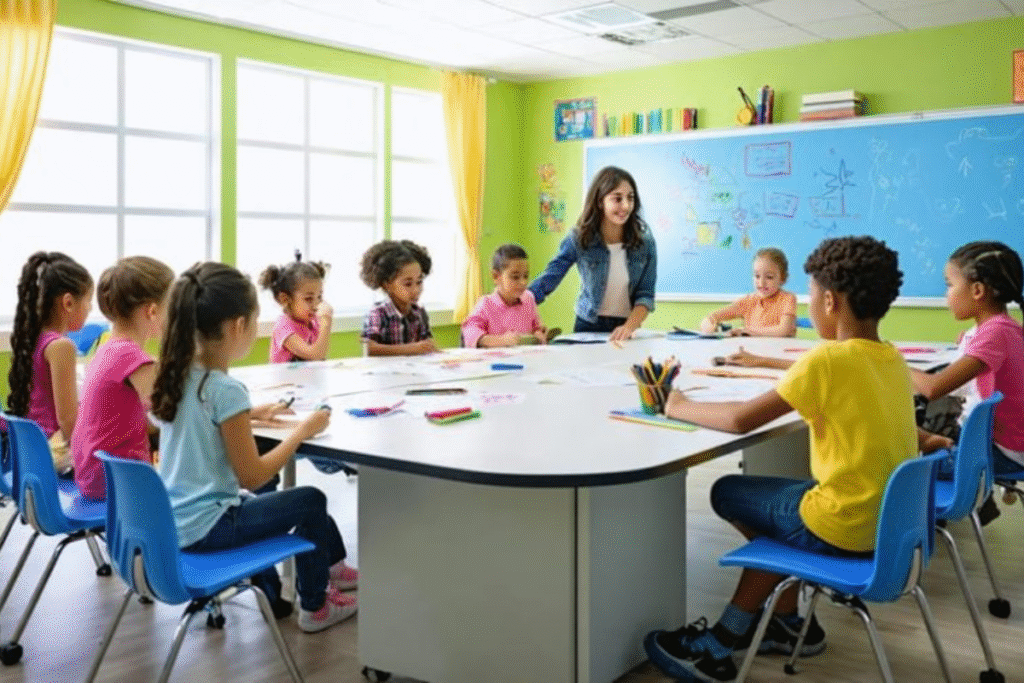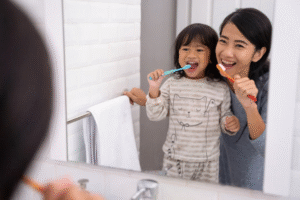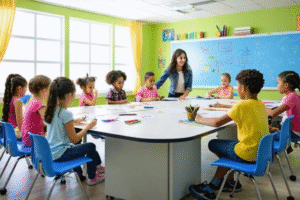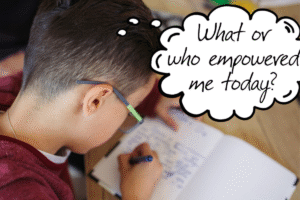Discover why kids’ health in the classroom matters and how schools, teachers, and parents can work together to create healthy, happy, and successful learners. Learn practical tips on hygiene, mental health, nutrition, and classroom wellness.
Why Kids’ Health in the Classroom Matters
Imagine walking into a classroom full of smiling, energetic kids ready to learn. Now, picture the same room when half the students are tired, sneezing, or feeling anxious. Big difference, right? That’s exactly why kids’ health in the classroom is so important. A healthy mind and body help children focus, learn faster, and enjoy their school day.
When we talk about school health or healthy schools, we don’t just mean keeping germs away. It’s about creating an environment where students feel safe, active, and happy. Good classroom hygiene, regular movement, and healthy food choices all play a huge role. Teachers and parents working together can make every classroom a place where kids grow not just academically, but emotionally and physically too.
Think about it — when kids wash their hands, eat nutritious snacks, and get small breaks for stretching or classroom physical activity, they don’t just stay healthy; they also perform better in class. Studies show that children who are active during lessons have sharper focus and fewer sick days. Even simple things like opening windows for fresh air or adding a few plants can make the classroom environment fresher and improve air quality.
But kids’ health in the classroom isn’t only about avoiding illness. It’s also about mental health in school. Kids who feel cared for and supported by teachers often show more confidence and better behavior. A quick “How are you feeling today?” from a teacher can make a big difference in a child’s day.
Teachers, parents, and school nurses are the real heroes behind this effort. Together, they create strong, school health programs that focus on both physical activity and emotional well-being. By working as a team, they ensure every child can learn, laugh, and thrive.
A healthy classroom is more than clean desks and snack rules — it’s a community that nurtures happy hearts and strong minds. Because when kids feel good, they learn better, smile more, and carry that positivity home.
Physical Health and Daily Hygiene Habits

Good health starts with simple, everyday habits. In the classroom, these small steps can make a big difference in how kids feel and perform. Encouraging daily hygiene habits helps children stay strong, confident, and ready to learn.
Let’s start with the basics — handwashing. It might seem like a tiny thing, but washing hands with soap before meals and after using the restroom can prevent up to 40% of illnesses. When students follow proper classroom hygiene routines, everyone benefits. Fewer kids get sick, attendance improves, and learning doesn’t stop because of colds or tummy aches.
Teachers can make this fun! Singing a “20-second handwashing song” or having colorful posters reminding kids to wash up makes hygiene a natural part of the school day. Even setting up a “clean desk challenge” once a week can inspire students to take pride in their space.
Another key to kids’ health in the classroom is physical activity. Long hours of sitting can make kids restless and tired. Simple stretching, short movement breaks, or a quick classroom dance can improve mood and focus. In fact, studies show that kids who engage in regular classroom physical activity perform better academically and have stronger immune systems.
Let’s not forget about nutrition. Packing a balanced lunch full of fruits, vegetables, and water instead of sugary drinks gives kids lasting energy. Teachers can talk about healthy eating habits during lessons, encouraging kids to make smart food choices both at school and home.
Maintaining good classroom cleanliness is also essential. Desks, doorknobs, and shared items like pencils or crayons can carry germs. A daily wipe-down routine keeps the classroom safe and fresh. Even opening windows for a few minutes brings in clean air and boosts concentration.
When students develop these healthy habits early, they carry them for life. Clean hands, good food, and regular movement might sound simple, but they build the foundation for a lifetime of wellness.
Every smile, every burst of laughter, and every “aha!” moment in the classroom begins with one thing — a healthy body. Because when kids feel good on the inside, they shine on the outside too!
Supporting Kids’ Mental and Emotional Health in the Classroom
When we talk about kids’ health in the classroom, it’s not just about strong bodies — it’s also about strong minds. A happy heart helps kids learn, connect, and grow. That’s why focusing on mental and emotional health is just as important as teaching math or science.
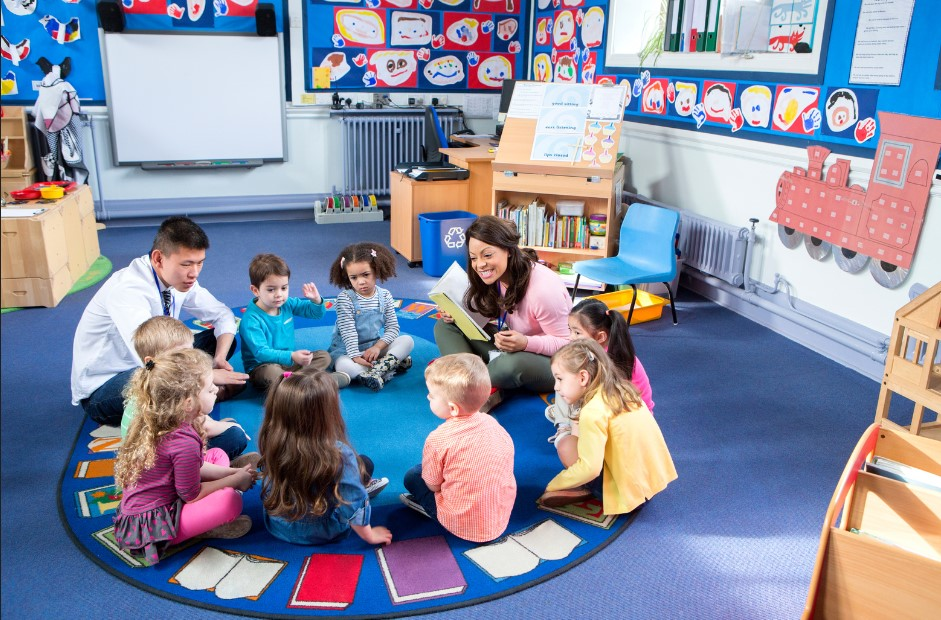
Kids experience a wide range of feelings every day — excitement, worry, sadness, or even stress. Sometimes, these emotions can make it hard to focus or stay positive. Teachers who create a warm, understanding environment can make a world of difference. Just asking, “How are you feeling today?” or giving a kind smile can brighten a child’s mood and build trust.
A big part of mental health in school is helping children understand and express their emotions. Activities like “feelings charts” or morning check-ins allow students to share what’s on their minds. These simple moments teach kids that their feelings matter and that it’s okay to talk about them.
Encouraging kindness is another key step. Small acts of friendship — like sharing supplies or helping a classmate — boost emotional well-being and create a caring classroom culture. Teachers can also include mindfulness activities, like deep breathing or a one-minute “quiet time,” to help kids calm their thoughts and refocus.
When teachers notice changes in behavior, like a quiet student who suddenly becomes withdrawn, it’s important to act early. Working with school counselors, parents, or school health programs ensures every child gets the support they need. Building this team around the student helps prevent small worries from turning into bigger struggles.
Let’s not forget that emotional health is linked to physical health too. When kids feel anxious, their bodies react — they might get headaches or stomachaches. So creating a safe, loving, and fun classroom helps protect both their mind and body.
Every child deserves to feel seen, heard, and valued. When students feel emotionally secure, they’re not just learning facts — they’re learning confidence, empathy, and resilience.
A classroom that nurtures both health and heart becomes a place where kids truly thrive — because a happy mind learns best!
Building a Healthy Classroom Environment
A healthy classroom isn’t just a place to study — it’s a space where kids feel safe, supported, and inspired every single day. Building a strong foundation for kids’ health in the classroom means creating an environment that supports both the body and the mind.
The first step is to keep the classroom environment clean and welcoming. A tidy space helps students concentrate better and feel comfortable. Teachers can involve kids by giving them small “clean-up” roles, like wiping desks or organizing supplies. When children take part in keeping their classroom neat, they feel responsible and proud of their space. It’s teamwork in action!
Next comes the air quality and lighting. Opening windows for a few minutes or adding a few green plants can freshen the air and lift everyone’s mood. Natural light also helps reduce tiredness and improves focus — that’s why schools with bright classrooms often report higher student engagement and better learning outcomes.
A healthy classroom also means paying attention to how kids interact. Creating clear rules for kindness, respect, and cooperation builds a positive atmosphere. When students feel respected and heard, they’re more likely to share ideas and take part in activities. Encouraging mental health awareness and empathy helps everyone feel included.
Let’s not forget classroom physical activity. Setting aside short movement breaks between lessons keeps energy levels up and improves learning. Even a quick stretch or a one-minute dance can re-energize the class and bring laughter back into the room.
Teachers can also introduce healthy classroom routines — like morning greetings, hydration breaks, and calm-down corners. These small habits build consistency and help students feel emotionally balanced throughout the day.
And of course, communication is key. When teachers, parents, and school health programs work together, they can better support each child’s well-being. Sharing updates about sleep habits, diet, or emotional challenges ensures every student gets the right care, both at home and school.
In the end, a healthy classroom environment is more than just four walls. It’s a community full of energy, kindness, and care — a place where every child feels happy to learn and proud to belong.
Role of Teachers, Parents, and Schools in Kids’ Health
When it comes to kids’ health in the classroom, teamwork makes all the difference. Teachers, parents, and schools each play a special role in helping children stay healthy, happy, and ready to learn. When everyone works together, amazing things happen — kids grow stronger in both mind and body.
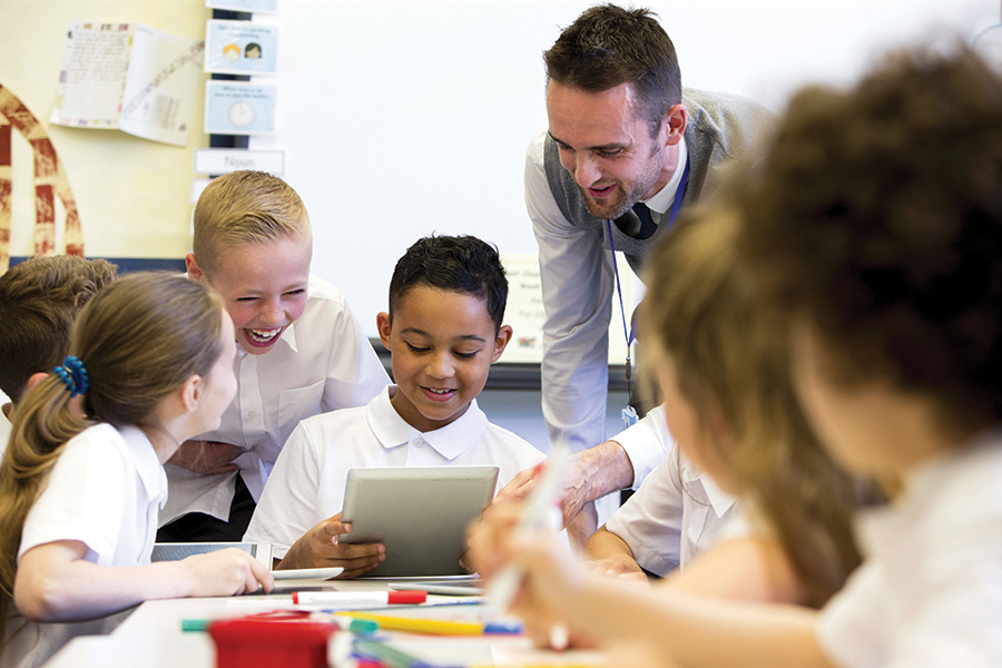
Let’s start with teachers. They spend hours each day with students, so they see firsthand how children behave, eat, and interact. A teacher who notices a child looking tired, sad, or distracted can step in early. Simple actions — like reminding kids to wash their hands, drink water, or take a stretch break — support school health every single day. Teachers also help by creating healthy classroom routines, encouraging physical activity, and teaching lessons about nutrition and emotional well-being.
Parents are the second pillar of this teamwork. Healthy habits begin at home — from a balanced breakfast to good sleep routines. Parents can pack nutritious lunches, talk about emotions, and encourage children to share their school experiences. When parents stay connected with teachers, they can spot and solve small issues before they grow into bigger ones. This home-school connection helps kids feel supported and confident.
Finally, schools play a major role in promoting student health and wellness. Many schools run school health programs that include exercise sessions, health screenings, and mental health awareness activities. Having a school nurse on campus is another huge advantage — they help track student health and teach kids about hygiene, safety, and emotional care.
Schools that focus on health often see better attendance, improved grades, and happier students. Programs that combine healthy eating, classroom physical activity, and mental health support make a lasting difference in children’s lives.
The best part? Kids notice it. They feel the care, the attention, and the effort. When they see teachers and parents working together, they learn that health is something to value and protect.
At the end of the day, the goal is simple — a strong partnership that puts children first. Because when teachers, parents, and schools join hands, every classroom becomes a healthier, brighter, and more joyful place to grow.
Fun and Engaging Ways to Teach Health in the Classroom
Learning about kids’ health in the classroom doesn’t have to feel like a boring lecture. In fact, the best way to help children remember healthy habits is to make them fun and interactive! When kids laugh, move, and play while learning, the lessons stick — and healthy choices become a natural part of their daily life.
One of the easiest ways to teach school health is through games and activities. For example, a “Germ Tag” game can teach students how easily germs spread and why handwashing is so important. Another idea is a healthy foods relay, where kids race to sort fruits, veggies, and junk foods into the right baskets. It’s exciting, competitive, and a perfect way to teach nutrition and smart eating habits.
Teachers can also use storytelling to share lessons about physical and mental health. Kids love stories — and stories about superheroes who wash their hands, eat healthy snacks, or take deep breaths when feeling stressed can make health topics more relatable. Adding colorful posters or classroom charts about daily hygiene habits and physical activity helps reinforce what they’ve learned visually.
Music and movement make learning even more enjoyable. Morning “move breaks,” short dances, or a few minutes of stretching between lessons keep energy levels up and encourage classroom physical activity. Even two minutes of movement can make a big difference in focus and mood!
Another creative way is to start a classroom health challenge. For example, a “Drink More Water Week” or “Clean Desk Day” can motivate students to develop better hygiene and hydration habits. Schools can also invite school nurses or health professionals for interactive sessions, helping kids understand health topics from real experts.
And don’t forget art! Drawing healthy lunches, designing posters about kindness, or creating gratitude journals help build emotional and physical well-being together.
The secret is simple — when learning about health is exciting, kids don’t just listen; they live it. By making lessons active, creative, and full of laughter, teachers turn classrooms into healthy, happy, and inspiring places to grow.
Benefits of Promoting Kids’ Health in the Classroom
When teachers, parents, and schools work together to support kids’ health in the classroom, the results are truly amazing. Healthy students don’t just feel better — they learn better. A focus on school health helps children grow academically, physically, and emotionally, shaping them into confident and caring individuals.
One of the biggest benefits is improved focus and learning. When kids eat healthy snacks, drink enough water, and get regular classroom physical activity, their brains stay sharp and alert. A child who feels well can pay attention longer, remember more, and perform better in class. Studies even show that students in healthy schools score higher in reading and math!
Promoting daily hygiene habits like handwashing, keeping desks clean, and maintaining classroom hygiene also means fewer absences. When kids don’t get sick as often, they spend more time in school — and that’s great for learning and friendships too.
There are also strong emotional benefits. When students take part in activities that support mental health in school, they learn how to manage stress, express feelings, and show kindness. A classroom that focuses on emotional well-being becomes a safe place where kids can be themselves without fear or pressure. This sense of belonging boosts confidence and self-esteem.
Physically, healthy habits learned early — such as eating nutritious foods and staying active — lay the foundation for lifelong wellness. Kids who build these habits now are more likely to stay strong and active as adults. Plus, when children see teachers and parents modeling healthy choices, they naturally want to follow.
And let’s not forget the community benefits. When schools promote health education, it inspires families to make better choices at home. Parents start including more fruits and veggies in meals, and kids remind their families about handwashing and staying active. It’s a ripple effect that spreads positivity beyond the classroom walls.
In short, supporting kids’ health in the classroom is one of the best investments we can make. Healthy children are happier, smarter, and more motivated. Because when kids feel good inside and out, the entire classroom shines a little brighter.
Final Thoughts – Creating a Healthier Future for Every Child
At the heart of every great school is one simple truth — kids’ health in the classroom shapes their entire future. When students feel strong, safe, and supported, they’re not just learning facts; they’re learning how to live happy and healthy lives.
A clean, caring, and active classroom environment is more than a nice idea — it’s the foundation for success. When teachers encourage daily hygiene habits, plan short classroom physical activity breaks, and promote mental health awareness, they help build habits that last a lifetime. Small steps — like washing hands, drinking water, or taking a moment to breathe — teach children that health matters every single day.
Parents also play a huge role in this journey. Packing healthy lunches, talking about emotions, and supporting school health programs all strengthen the bridge between home and school. When kids see their families and teachers working together, they understand that health is something precious — something worth protecting.
Schools can take this even further by making health education part of their everyday routine. Simple lessons on nutrition, exercise, and emotional well-being can prepare kids to make smart choices beyond the classroom. These programs don’t just build healthy students; they build healthier communities.
The best part? Every child benefits — no matter who they are or where they come from. A focus on kids’ health in the classroom helps reduce stress, increase confidence, and improve academic performance. It creates a culture of care where children feel valued, respected, and motivated to do their best.
So, as we look to the future, let’s keep this vision clear: every classroom can be a place where health and happiness grow side by side. By working together — teachers, parents, and schools — we can give every child the gift of lifelong wellness.
Because when children feel good, they do good — in school, at home, and in life. A healthy child today builds a brighter, stronger tomorrow for everyone.

